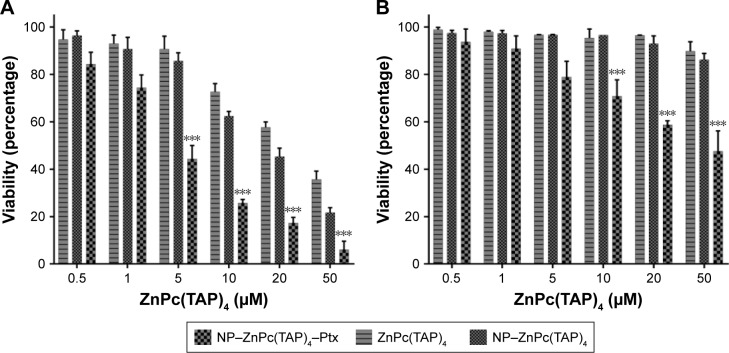Figure 3.
Cytotoxicity of NP–ZnPc(TAP)4–Ptx, NP–ZnPc(TAP)4 and ZnPc(TAP)4 for H1299 cells.
Notes: A total of 8,000 adherent cells were cultivated in 1-well of 96-well plates and absorbed NP–ZnPc(TAP)4–Ptx, NP–ZnPc(TAP)4, or ZnPc(TAP)4 at different concentrations (0.5 µM, 1 µM, 5 µM, 10 µM, 20 µM, or 50 µM) for 24 hours. Then, cells were illuminated with light fluence of 1.5 J/cm2 for 1 minute. After 24 hours for apoptosis, viable cells were checked by MTT. (A) The phototoxicity of three samples depended on their concentrations, and NP–ZnPc(TAP)4–Ptx had the strongest phototoxicity for the synergistic effect of PDT and chemotherapy. (B) Dark toxicity was detected in the same way, just without illumination. NP–ZnPc(TAP)4 and ZnPc(TAP)4 had hardly any dark toxicity, and the dark toxicity of NP–ZnPc(TAP)4–Ptx was significantly weaker than its phototoxicity. ***P<0.001.
Abbreviations: NP, nanoparticle; ZnPc, zinc phthalocyanine; Ptx, paclitaxel; PDT, photodynamic therapy.

